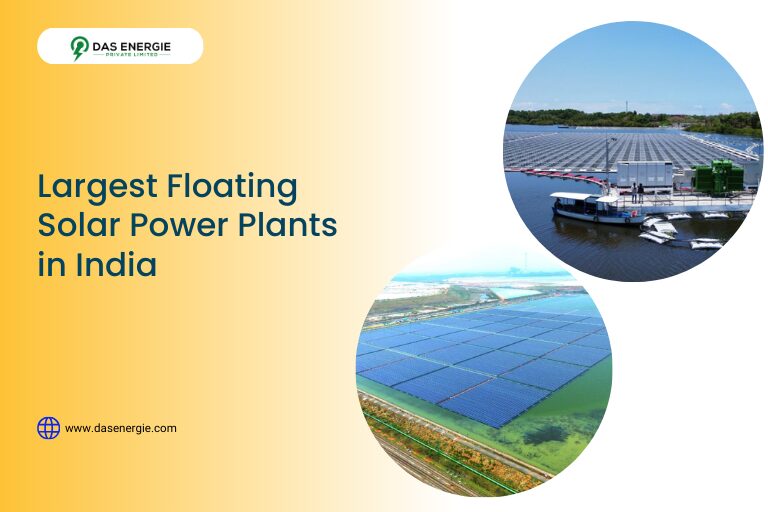


“Today, when the energy sources and excesses of our industrial age have put our planet in peril, the world must turn to the sun to power our future.”
– PM Modi at the launch of the International Solar Alliance
India has the potential to generate 280 GW to 300 GW of electricity by installing floating solar power plants. It will help the country fulfil its international commitments towards fighting climate change. To harness the potential of solar electricity, the government is now bringing the spotlight on solar power plants on water bodies.
Table of Contents
ToggleAs the name suggests, a floating solar power plant is a solar system setup on a water body. It converts the sunlight falling on the water into electricity by integrating solar panels on the water’s surface. A country with abundant water bodies can install such systems to generate free electricity and reduce reliance on thermal plants.
Here’s a list of major floating solar power projects in India:
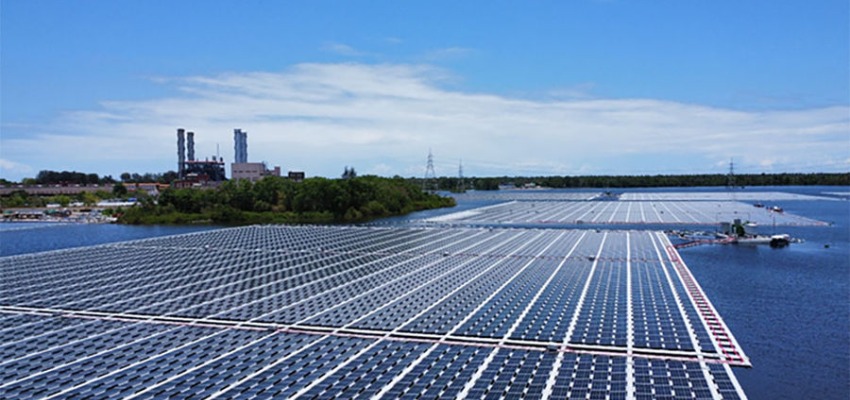
Capacity: 600 MW
Cost: Rs. 3000 crore
Location: Madhya Pradesh
Year of Commissioning: Yet to be completed
The Omkareshwar Floating Solar Project will be the world’s largest floating solar power plant upon completion. The project spans 1631 acres.
Built on the Narmada river in Khandwa district, Madhya Pradesh, it will prevent 12 lakh metric tonnes of CO2 emissions annually. It is equivalent to planting 1.52 crore trees.
According to a report published in NDTV, the government says that it will prevent evaporation of 60% to 70% of the water it covers. As per the government, this is equal to the drinking water of residents of Bhopal for 124 days.
As an Indian, you will be proud to know that the world’s largest solar park is in India as well. It is located in Bhadla, Rajasthan. Our blog on Bhadla Solar Park covers all the details about this project.
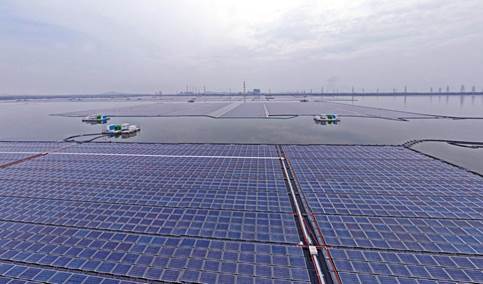
Capacity: 100 MW
Cost: Rs. 423 crore
Location: Telangana
Year of Commissioning: 2022
The Ramagundam Floating Solar Project is India’s largest floating solar power plant. Bharat Heavy Electricals Limited (BHEL) built it over 500 acres (PIB Report).
Divided into 40 blocks of 2.5 MW, each block has 1 floating platform and 11,200 solar modules. Its floating mounting structure is made of High-Density Polyethylene (HDPE). The floating structure has an inverter, transformer, and a high-tension circuit breaker.
The plant will prevent evaporation of 32.5 lakh cubic meters of water annually. It will help avoid coal usage of 1,65,000 tons and CO2 emissions of 2,10,000 tons annually.
As per NTPC, the floating structure is anchored through High Modulus Polyethylene (HMPE) rope to dead-weight concrete blocks placed in the balancing reservoir bed. 33 kV underground cables are used to transmit the electricity. All components including inverter, transformer, HT panel and SCADA (supervisory control and data acquisition) are on floating ferro-cement platforms.

Capacity: 92 MW
Cost: Rs. 465 crore
Location: Kerala
Year of Commissioning: 2022
It is India’s 2nd largest floating power plant. Electricity from the plant can light up 26,000 households daily.
The project can reduce carbon emissions by 1.73 lakh tonnes annually. It has about 3 lakh solar panels manufactured in India. Tata Power Solar has installed 70 MW and Bharat Heavy Electricals Limited installed 22 MW solar panels.
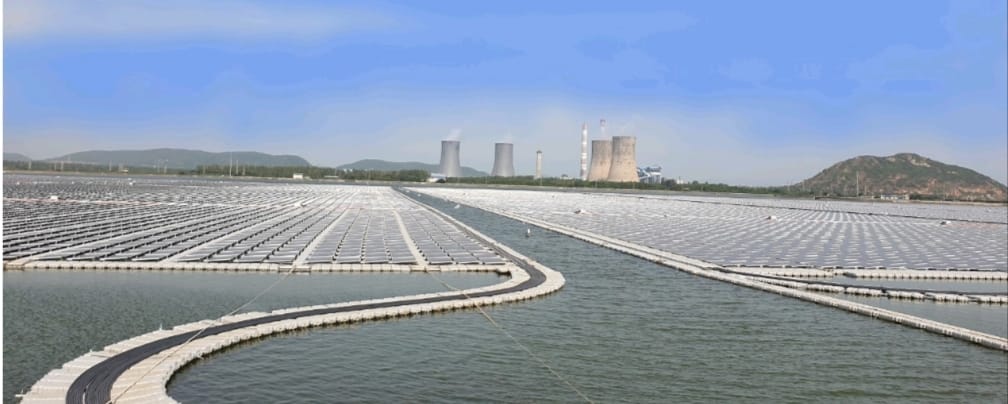
Capacity: 25 MW
Cost: Rs. 110 crore
Location: Andhra Pradesh
Year of Commissioning: 2021
NTPC commissioned the Simhadri Floating Solar Power Project on the reservoir of the Simhadri thermal station in Visakhapatnam. It was the first project to be set up under the Government of India’s flexibilisation scheme.
The project will prevent the evaporation of 1,364 million litres of water annually. This much water can meet the water requirements of 6,700 households annually.
It is spread over 75 acres and has over 1 lakh solar modules. The project can power about 7,000 households and prevent a minimum of 46,000 tons of CO2 emissions annually.
You can also reduce carbon emissions from thermal power generation with home solar system installation. Contact Das Energie Private Limited to find the most suitable solar installer for your solar project.
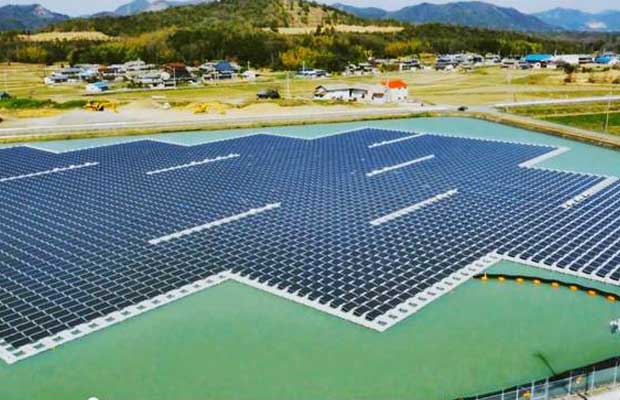
Capacity: 150 MW
Cost: Rs. 750 crore
Location: Uttar Pradesh
Year of Commissioning: Yet to be completed
It will be Uttar Pradesh’s 1st floating solar park. Power from the project will be sold to UP Power Corporation Limited at Rs 3.36 per unit for 25 years.
Renew Solar Power Private Limited will develop 100 MW and Shapoorji Pallonji Infrastructure Private Limited will develop 50 MW at the park.
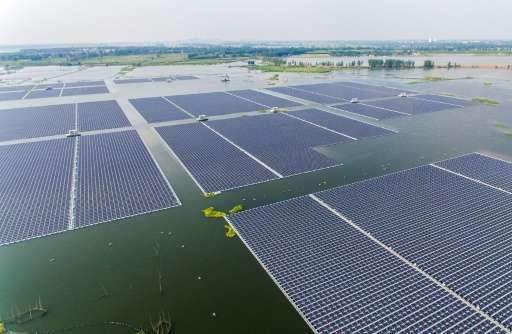
Capacity: 2 MW
Cost: Rs. 11.70 crore
Location: Chandigarh
Year of Commissioning: 2023
Chandigarh Floating Solar Power Plant is north India’s largest floating solar power project in terms of capacity. As per a report, it produces 28 lakh units of electricity annually, generating annual revenue worth Rs. 1.38 crore.
It prevents the emission of 80,000 tonnes of CO2 annually.
The plant will also help to avoid the evaporation of 382 million litres of water annually. Hartek Solar built this project under a contract from the Chandigarh Renewal Energy and Science and Technology Promotion Society (CREST).

Das Energie Private Limited is India’s 1st platform to provide online quotations for solar installation. You can get a premium solar installation experience by choosing our vendors for installing your solar system.
Here are some advantages of floating solar power plants:
A piece of land cannot be used for any other purpose if it already houses a solar system. When a solar system is built on a water body, land is kept free for other purposes such as agriculture or setting up industries.
A floating solar plant can be installed alongside a conventional power plant. The floating plant can use an already existing plant’s transmission infrastructure and avoid expenses on the same.
As per a study published in ADS, if a floating solar power plant covers 40% of a lake, it prevents algal blooms. Reduction in sunlight which reaches the algae prevents the bloom. Thus, it improves the quality of the aquatic ecosystem.
Floating solar power plants prevent evaporation by covering the water’s surface. Covering the water’s surface ensures that the water does not get heated up, thus preventing evaporation.
A solar panel’s efficiency reduces as it gets hot. The water surrounding a floating solar power plant ensures that the panels remain cool, thus enhancing their efficiency.
Want to install a solar system? You can compare quotations for solar installation at Das Energie Private Limited. We thoroughly scrutinise vendors before onboarding them.
The following components are used in a floating solar power plant:
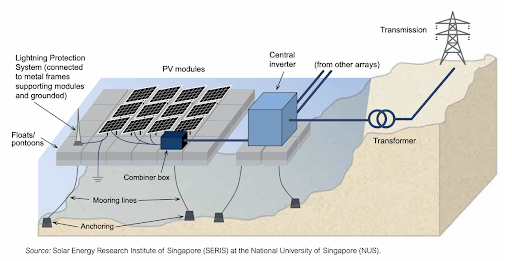
Panels capture sunlight and convert it into electricity. Solar panels use photovoltaic cells for this purpose.
An inverter converts the Direct Current (DC) into Alternating Current (AC). This is done because only Alternating Current (AC) can be used to power a home.
Floats or pontoons are the mounting structures holding the solar panel on water. It is made of High-Density Polyethylene (HDPE).
If you want to learn about the different types of mounting structures for a solar system, you can check my blog on mounting structures for solar panels.
A floating mounting structure is anchored using mooring lines. These lines are linked to dead weights at the bottom of the sea bed.
A transformer increases the voltage of solar electricity before it is sent to the transmission lines. Increasing the voltage reduces power loss during transmission.
It combines the electricity generated by all the solar panels into a single output. The electricity is then sent to the inverter for AC-DC conversion.
India aspires to be a world leader in the field of solar power. India’s role as one of the founders of the International Solar Alliance (ISA) is a striking example of the country’s ambition. As a country blessed with abundant water bodies, India can install floating solar power plants to generate almost 300 GW of electricity. It can reduce India’s dependence on importing coal and prevent pollution.
At Das Energie Private Limited, we are on a mission to make the solar installation business transparent. We provide quotations from DISCOM-empanelled vendors for installing your solar system. You can compare quotations to get the most value for money for installing your solar system.
Some of the world’s notable floating solar power plants are Dezhou Dingzhuang Floating Solar Farm in China, the Sembcorp Floating Solar Farm in Singapore, and the Ramagundam Floating Solar Power Project in India.
Assam’s Bhurbandha Gaon Panchayat installed northeastern India’s 1st floating solar power plant with a capacity of 10.50 kW in 2017.
As per studies, India has the potential to generate 280 GW to 300 GW of electricity from floating solar power systems.
Currently, the world’s largest floating solar power project is the Dezhou Dingzhuang Floating Solar Farm in China. It has a capacity of 320 MW.
Once the Omkareshwar Floating Solar Project in India is complete, it will be the world’s largest floating solar power project. It will have a capacity of 600 MW.
It is made of high-density polyethylene (HDPE). Advantages of HDPE include its strength, resistance to corrosion, and ease of recycling.
India’s largest floating solar power plant is in Ramagundam, Telangana. It has a capacity of 100 MW. Once the Omakreshwar floating solar power plant is complete, it will be India’s and the world’s largest floating solar power plant with a capacity of 600 MW.
He is in the solar installation industry from the last decade. He contributes on our blog to impart his long-cherished knowledge and experience on different aspects in the solar industry. The knowledge will be valuable for both new solar professionals, enthusiasts and willing solar customers.

1 Comment
Zoya Hussain
I live near the Ramagundam floating solar project. It is very good use of the unused water body. Lovely blog. Did not know about so many floating plants.